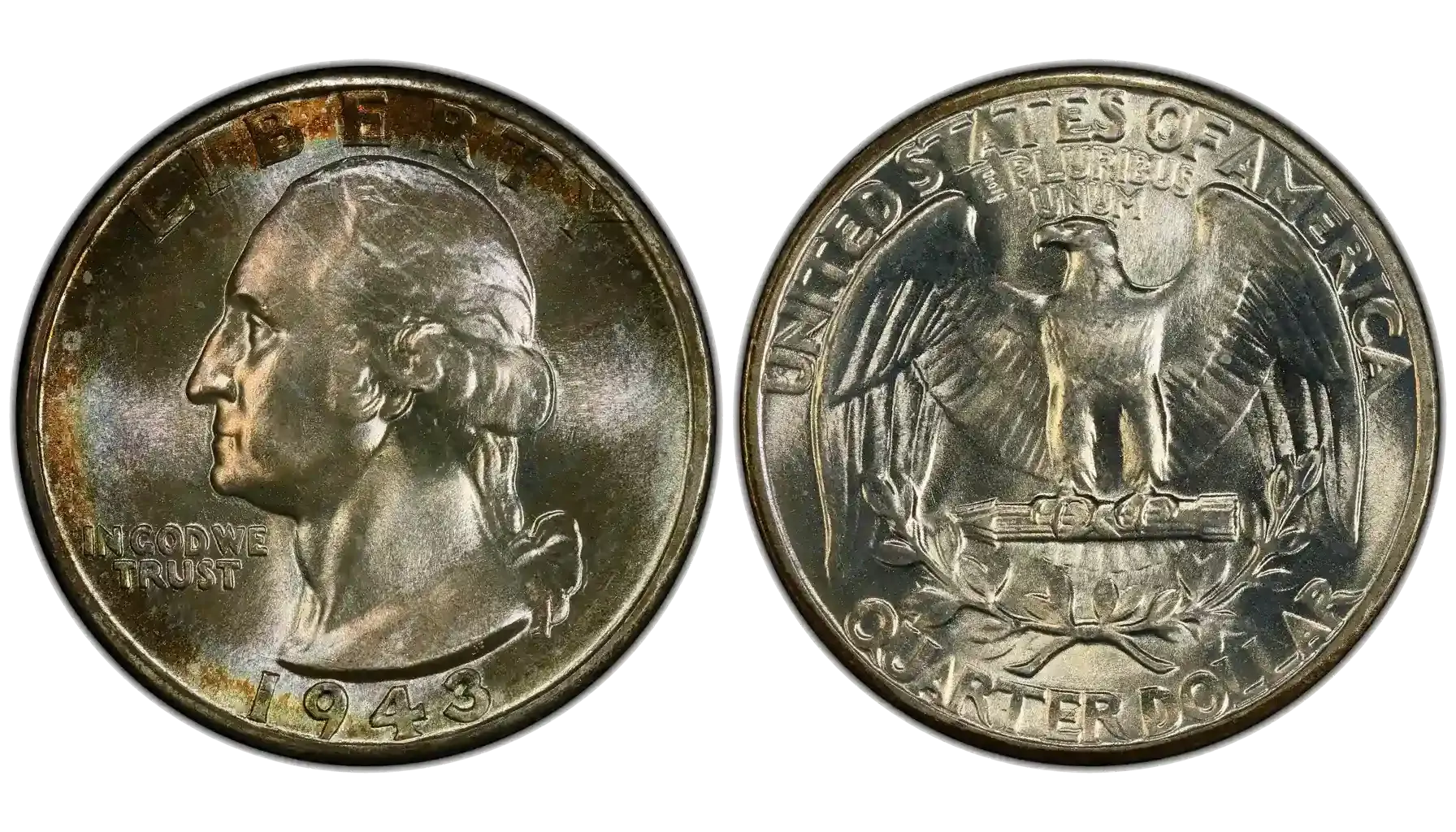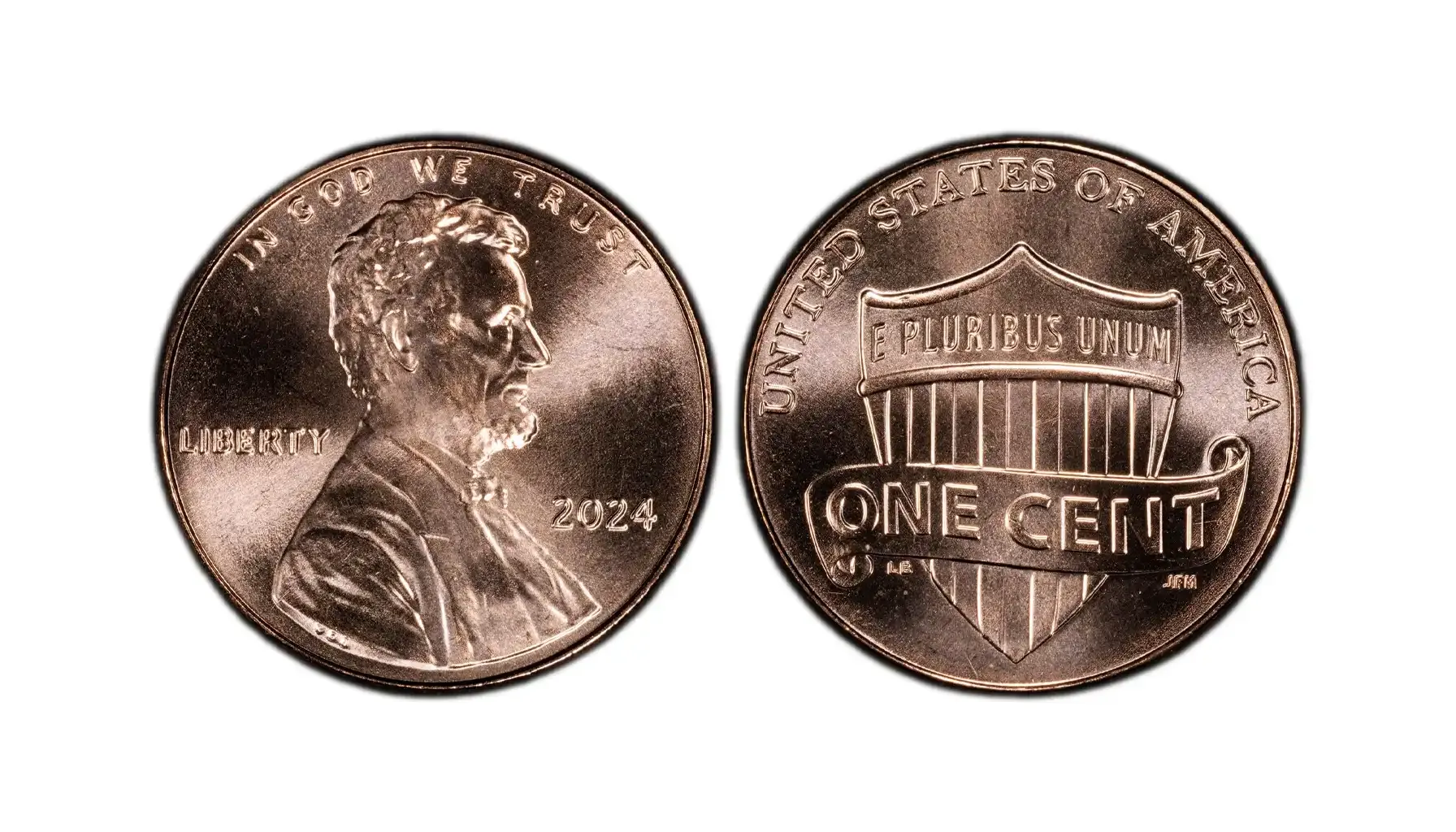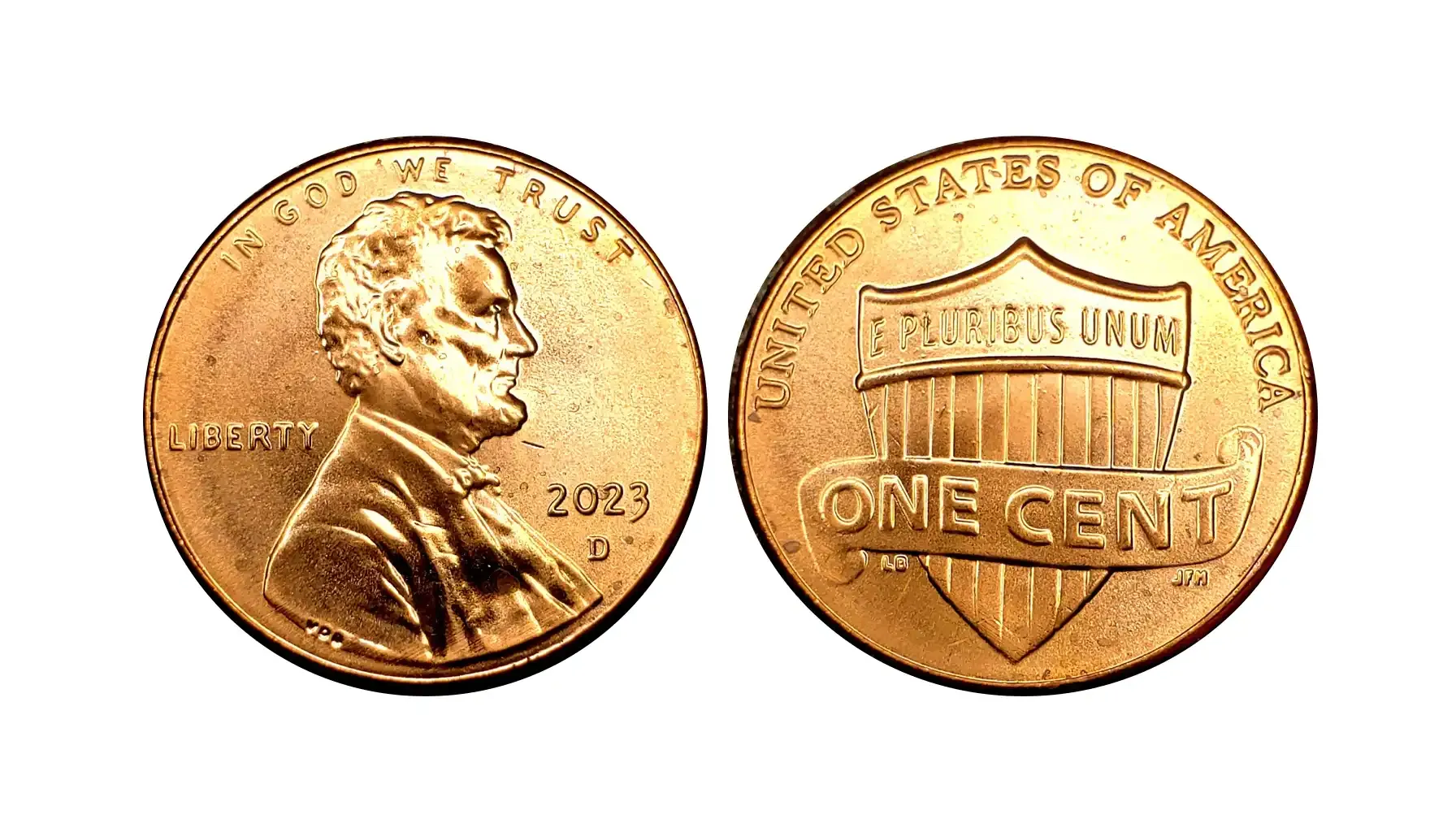Contents:
Struck in the shadows of war, released when one could only hope and dream (when free from devastating battles and solid preparations)... The 1917 Lincoln wheat penny is an actual illustration of the past that no one could even imagine to be real. Nevertheless, as basic needs cannot be paused and then resumed at any time, the US Mint continued producing Lincoln cents to ensure the economy would not collapse overnight.
Over a century later, these coins still circulate among collectors, and their worth (both from cultural and commercial perspectives) cannot be explained in simple terms. This material exquisitely delves into the mechanisms of the 1917 wheat penny value, its significant constituents, and features that identify this coin as rare. Let the exploration begin.
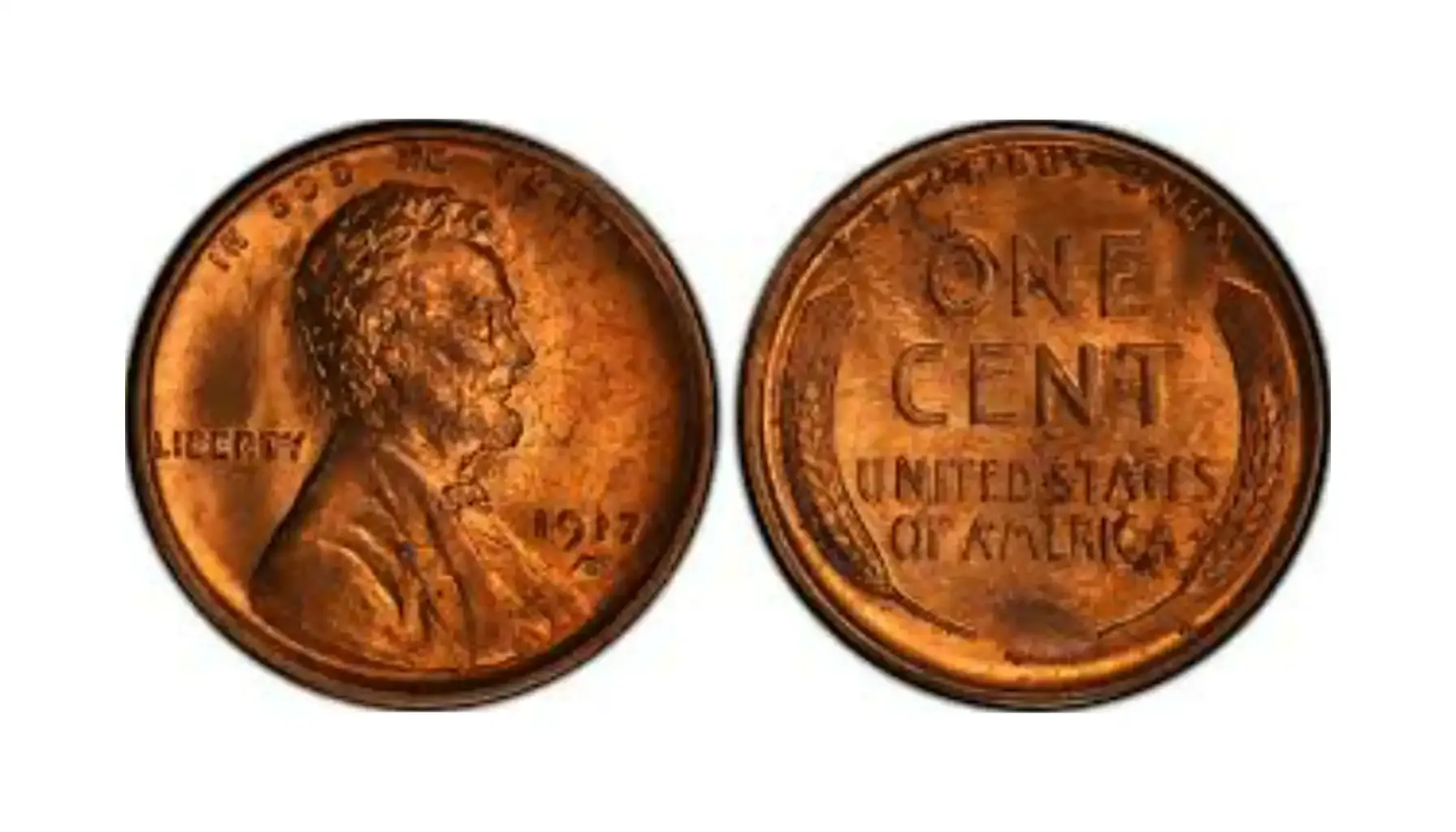
What Is the 1917 Wheat Penny?
The 1917 Wheat Penny is a one-cent coin minted in the United States as a part of the legendary Lincoln Wheat Cent series, having spanned from 1909 to 1958. The original design, which was introduced with a 1909 VDB cent, raised concerns among numismatists and authorities involved in coin production.
In fact, the personality of the engraver, responsible for the creation of the series design, was quite immense, and putting his own initials on the coin's surface would mean drawing unusual attention to the artist rather than the subject. However, VDB was quickly removed in later issues anyway (with an occasional return in 1918 for one last time). As for the hero of our article, it featured the cleanest design to commemorate the 100th anniversary of Abraham Lincoln's birth (as intended).
Related article: 1909 VDB Penny: The Controversial King of Lincoln Cents
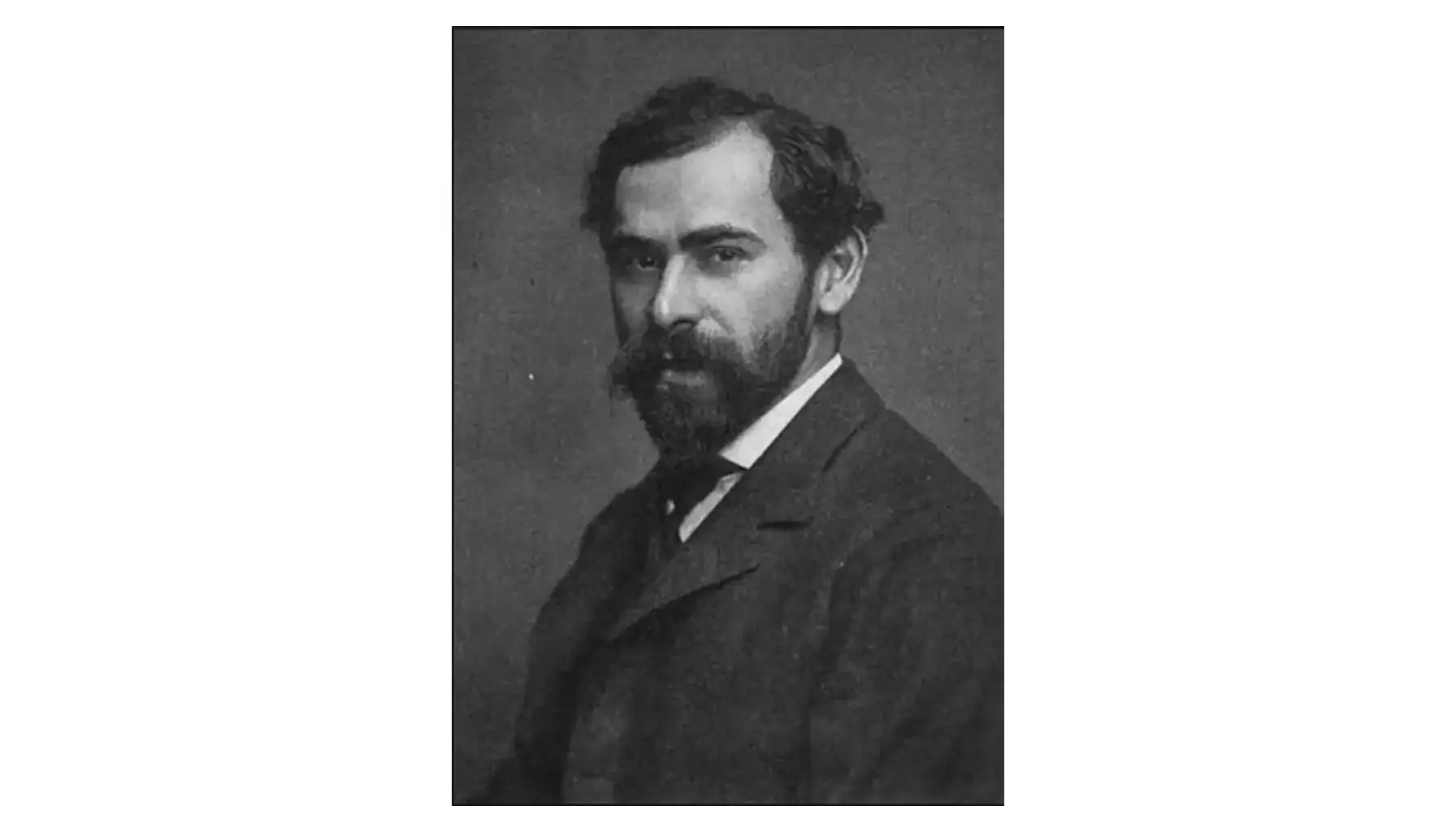
Design and Specifications
Obverse: The obverse side features the right-facing bust of Abraham Lincoln, the 16th President of the United States, along with the inscriptions "IN GOD WE TRUST" (along the upper rim), "LIBERTY" (to the left of Lincoln), and "1917" (to the right of Lincoln), with a mint mark below the date.
Reverse: The reverse, though, showcases two sheaves of wheat curved along the left and right rims, supported by the inscriptions "ONE CENT" (centered), "UNITED STATES OF AMERICA" (just below "ONE CENT"), and "E PLURIBUS UNUM" (at the top).
The Main Characteristics | |
Designer | Victor David Brenner |
Obverse | Lincoln bust with date and motto |
Reverse | Wheat ears with denomination |
Type | Lincoln Wheat Cent |
Years Minted | 1909–1958 (1917 issue) |
Mint Marks | None for Philadelphia) “D” for Denver “S” for San Francisco |
Composition | 95% copper, 5% tin and zinc |
Weight | 3.11 grams |
Diameter | 19.05 mm |
Thickness | 1.55 mm (approximate) |
Edge | Plain |
Mintage | ~284 million in total |
The 1917 Lincoln Penny Coins by Mint
1917 1C
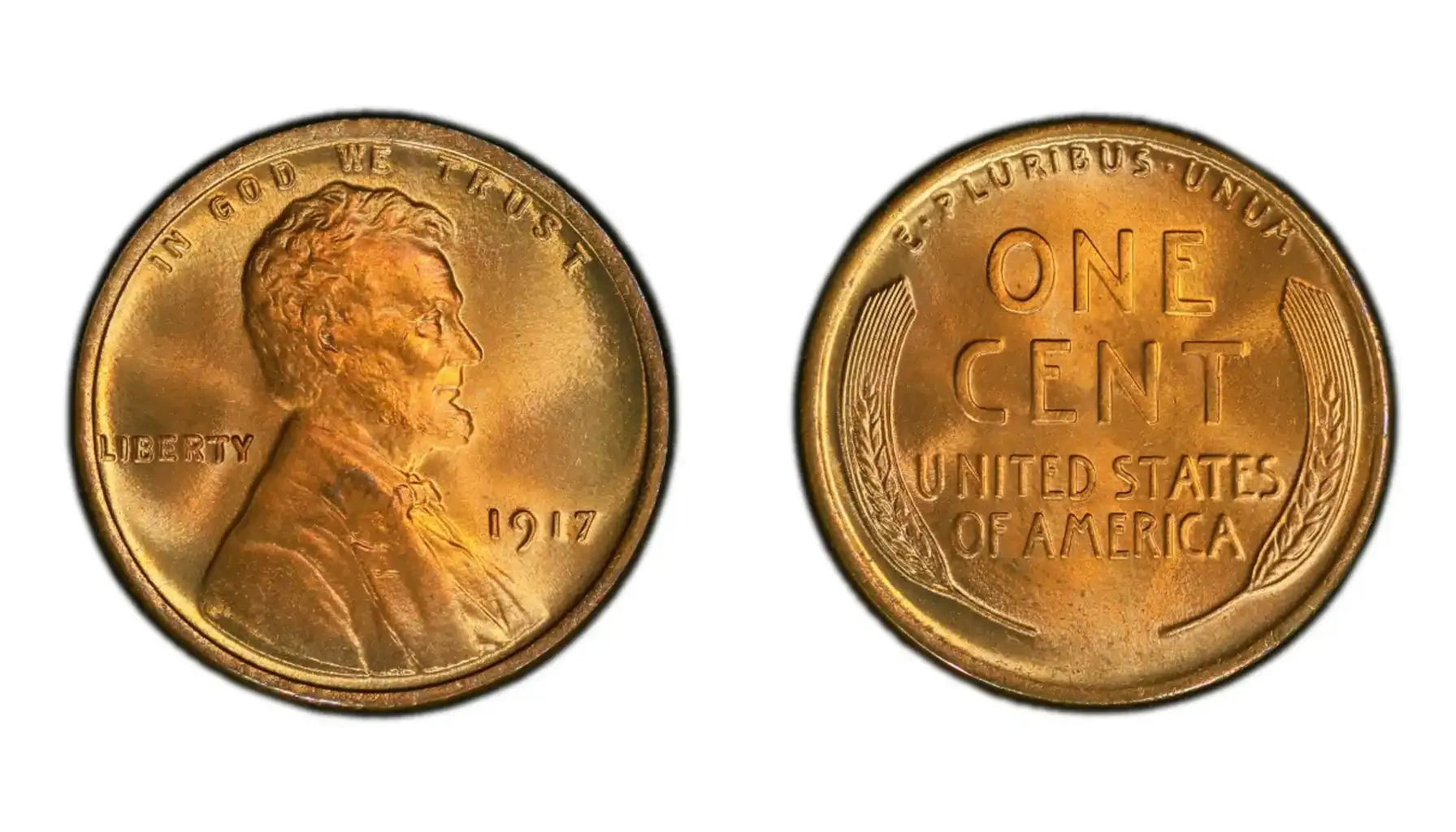
Produced by: Philadelphia Mint
Mintage: 196,429,785
Designations: BN (Brown), RB (Red-Brown), RD (Red)*
Auction Record: $38,813 for MS68 RD (Heritage Auctions)
The 1917 wheat penny no mint mark is a product of the Philadelphia Mint, which can be considered the most common of the three business strikes that year. Due to the highest mintage, it is available in all circulated grades and even in uncirculated condition, yet the 1917 wheat penny value of exceptional grades is far more impressive (especially when with RD color designation). The rest are rather affordable and mean a great place to start.
1917-D 1C

Produced by: Denver Mint
Mintage: 55,120,000
Designations: BN (Brown), RB (Red-Brown), RD (Red)
Auction Record: $21,275 for an MS66 RD (Heritage Auctions)
The next issue was released by the Denver Mint and may be characterized by a moderately lower mintage (with circulated examples being common as well). The strike quality can vary, but the appeal of the 1917 D penny they grant is equally fine.
1917-S 1C
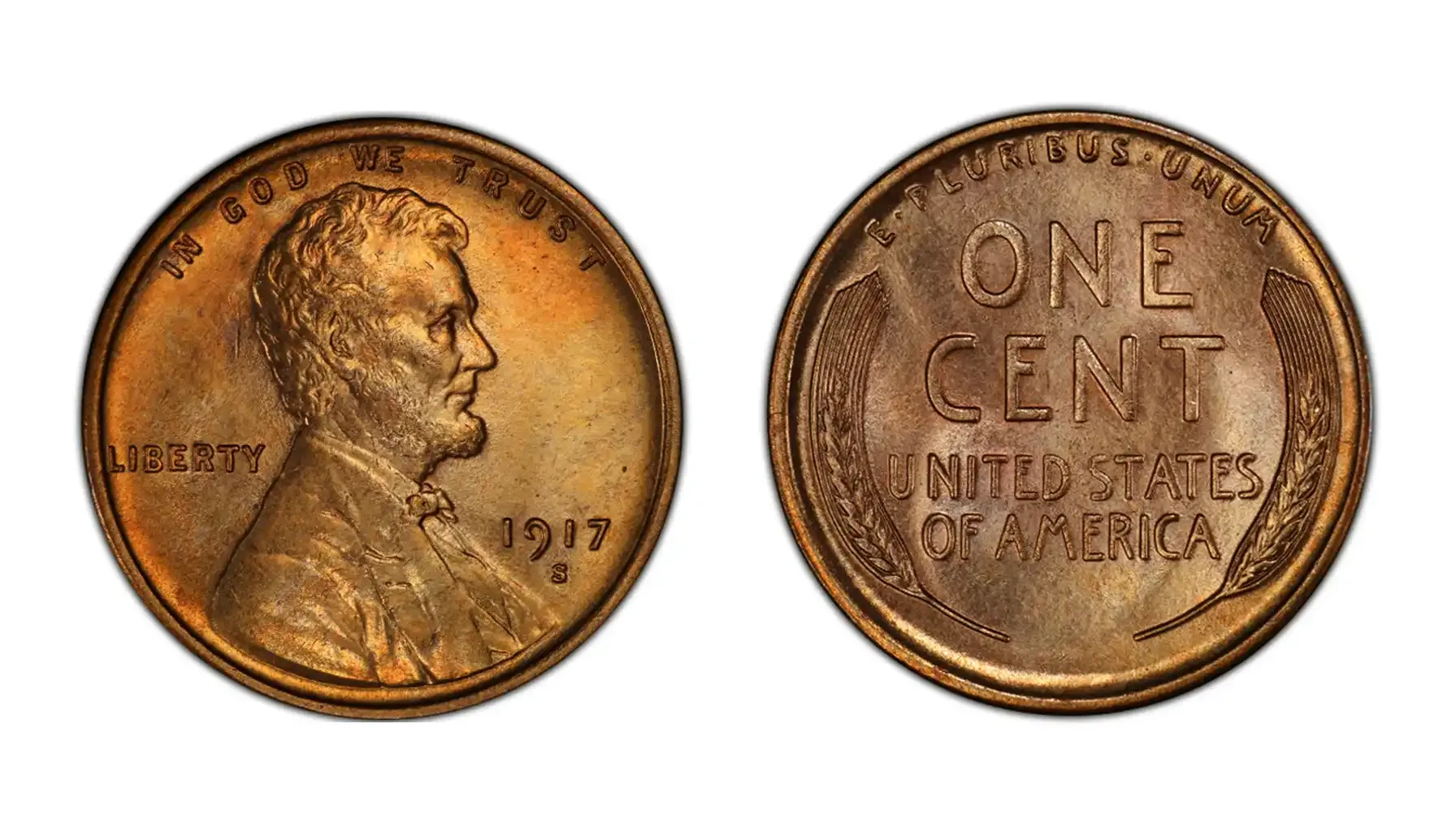
Produced by: San Francisco Mint
Mintage: 32,620,000
Designations: BN (Brown), RB (Red-Brown), RD (Red)
Auction Record: $36,800 for an MS65 RD (Bowers & Merena)
The San Francisco issue is the scarcest of the three 1917 cents by mintage, and it is extremely difficult to find in higher grades. As Jaime Hernandez stated, the 1917 S penny is reasonably obtainable, yet in XF/EF+ (Extremely Fine) grades, examples fade away. Mint State 65 specimens are elusive, with estimates suggesting only about 50 certified examples exist at that level. And this can be turned into your advantage: what if it is you who will spot a new high-grade sample of this type?
*What makes a 1917 penny rare? This can be color designations, i.e., BN (Brown), RB (Red-Brown), and RD (Red), all of which refer to the level of original luster remaining (in percents). To learn more about designations and value ranges, please refer to Coin ID Scanner, i.e., the app that may identify, verify, and evaluate coins on the spot.
How Much Is a 1917 Penny Worth? Grade by Grade
The value of a 1917 wheat penny may depend on different factors, but the tendency is always the same: prices do fluctuate, and one should keep up with the latest news to understand how much their collections may cost. Coins are graded on a scale from Poor (P-1) to Mint State (MS-70), and the higher the grade, the more valuable the coin is.
A coin that might be worth only one to a few cents in low grade could be sold for hundreds or even thousands of dollars at the most reputable auctions if it is well-preserved, has full red luster (RD), and is free from wear. So, how much is a 1917 wheat penny worth? Let us check.
Grade | 1917 | 1917-D | 1917-S |
Good (G-4) | $0.25 – $0.50 | $0.50 – $1.00 | $0.75 – $1.50 |
Fine (F-12) | $0.75 – $1.50 | $2 – $3 | $3 – $4.50 |
Very Fine (VF-20) | $2 – $4 | $5 – $7 | $7 – $10 |
Extremely Fine (EF-40) | $5 – $8 | $12 – $20 | $20 – $35 |
About Uncirculated (AU-50) | $10 – $40 | $25 – $80 | $40 – $100 |
Mint State (MS60–MS63) | $50 – $125 | $110 – $350 | $170 – $600 |
Gem Uncirculated (MS64–MS65 RD) | $160 – $78,000 | $450 – $40,500 | $825 – $120,000 |
Value ranges are displayed according to the PCGS Price Guide, i.e., predictions and market data analysis conducted by certified numismatists only.
A Few More Aspects That Boost the 1917 Penny Value
Color Designations
Is a 1917 penny worth anything? This may depend on the color it exhibits. In fact, copper coins naturally oxidize over time, which affects their color and value. Collectors and grading services categorize them by how much of the original mint red luster remains:
BN (Brown): Fully oxidized, least valuable.
RB (Red-Brown): 15–85% original red remains.
RD (Red): At least 95% red luster intact.
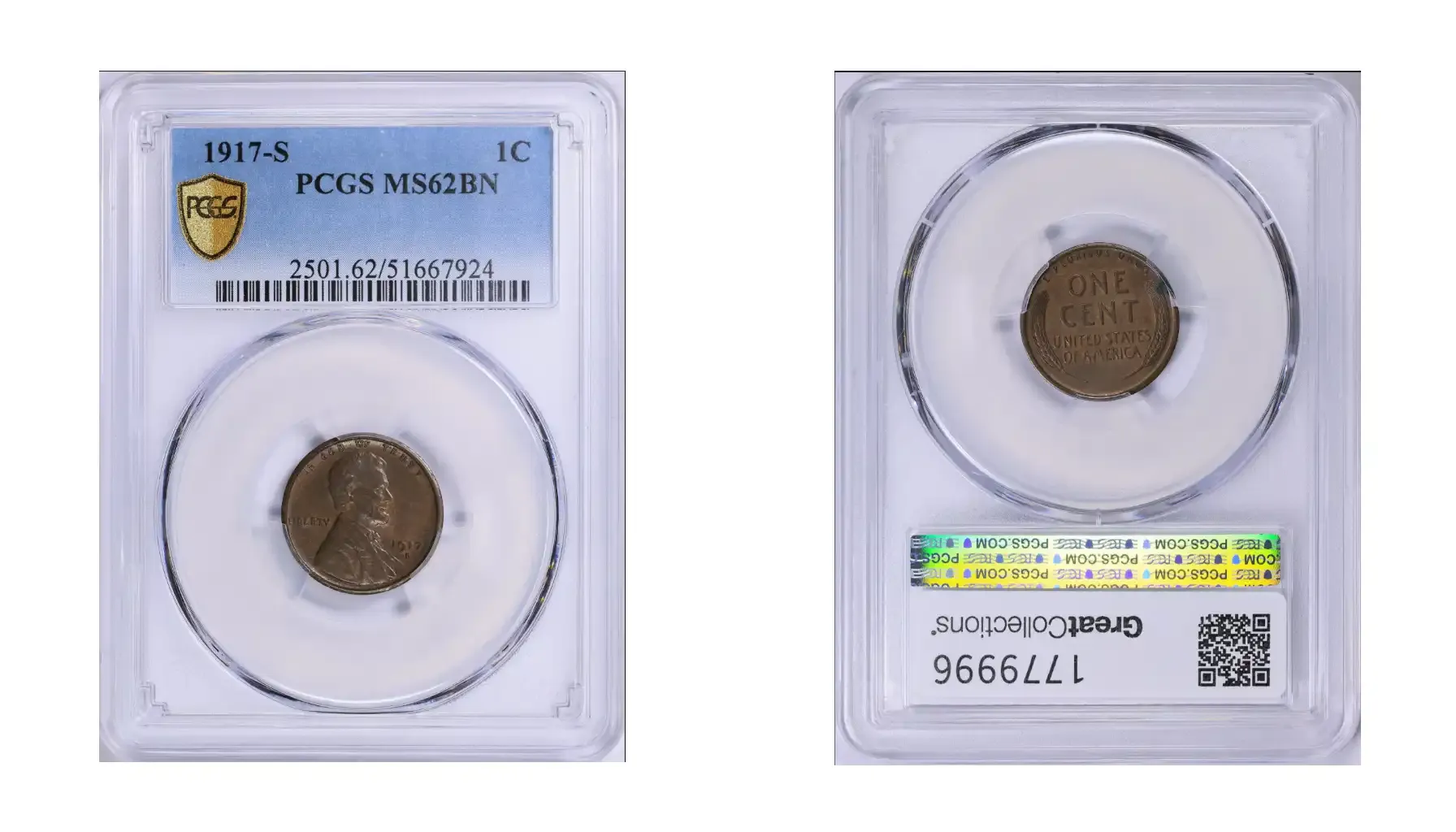
Metal Composition and Melt Value
The 1917 cent, just like its previous issues, is composed of 95% copper and 5% tin and zinc. Each metal has its own price, although it cannot outweigh the collector value anyway. Nevertheless, copper prices can subtly influence the base demand for older cents. However, melting cents for scrap metal is illegal in the US, so their true value remains collectible.
Notable Minting Errors
Errors make numismatic creations more exclusive, for they provide them with unique characteristics that cannot be repeated or made on purpose. Some deviations may be widespread, though, yet their appearance and severity differ, too.
1917 Double Die Penny (DDO)
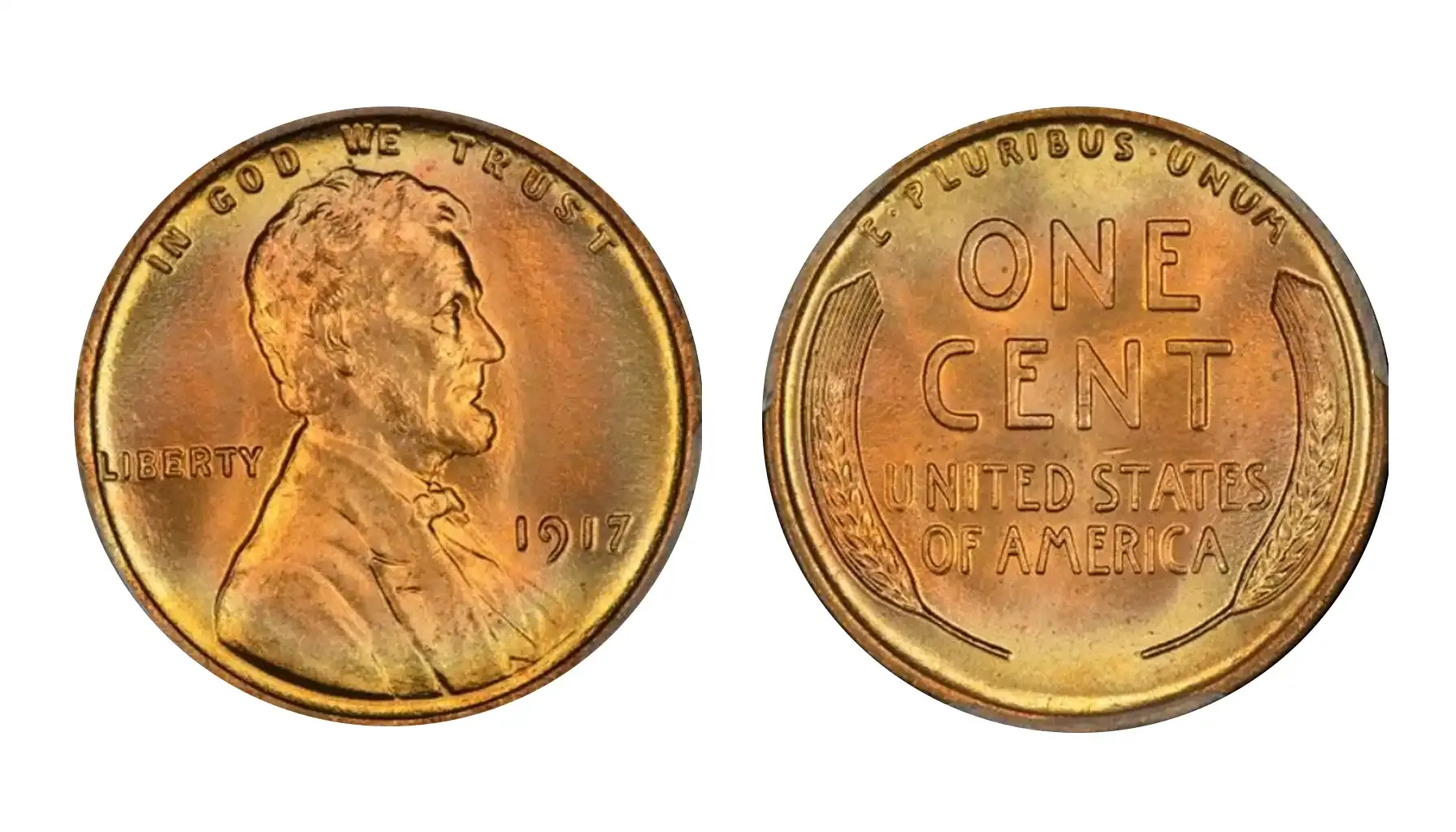
Estimated Value: Up to $120,000 (MS67+RD)
When the obverse die was engraved twice at slightly different angles, there appears a visible doubling on the date and LIBERTY. This is how the 1917 double die penny was created. Extremely rare in high grades and intensely pursued by error specialists.
"L" Missing in LIBERTY
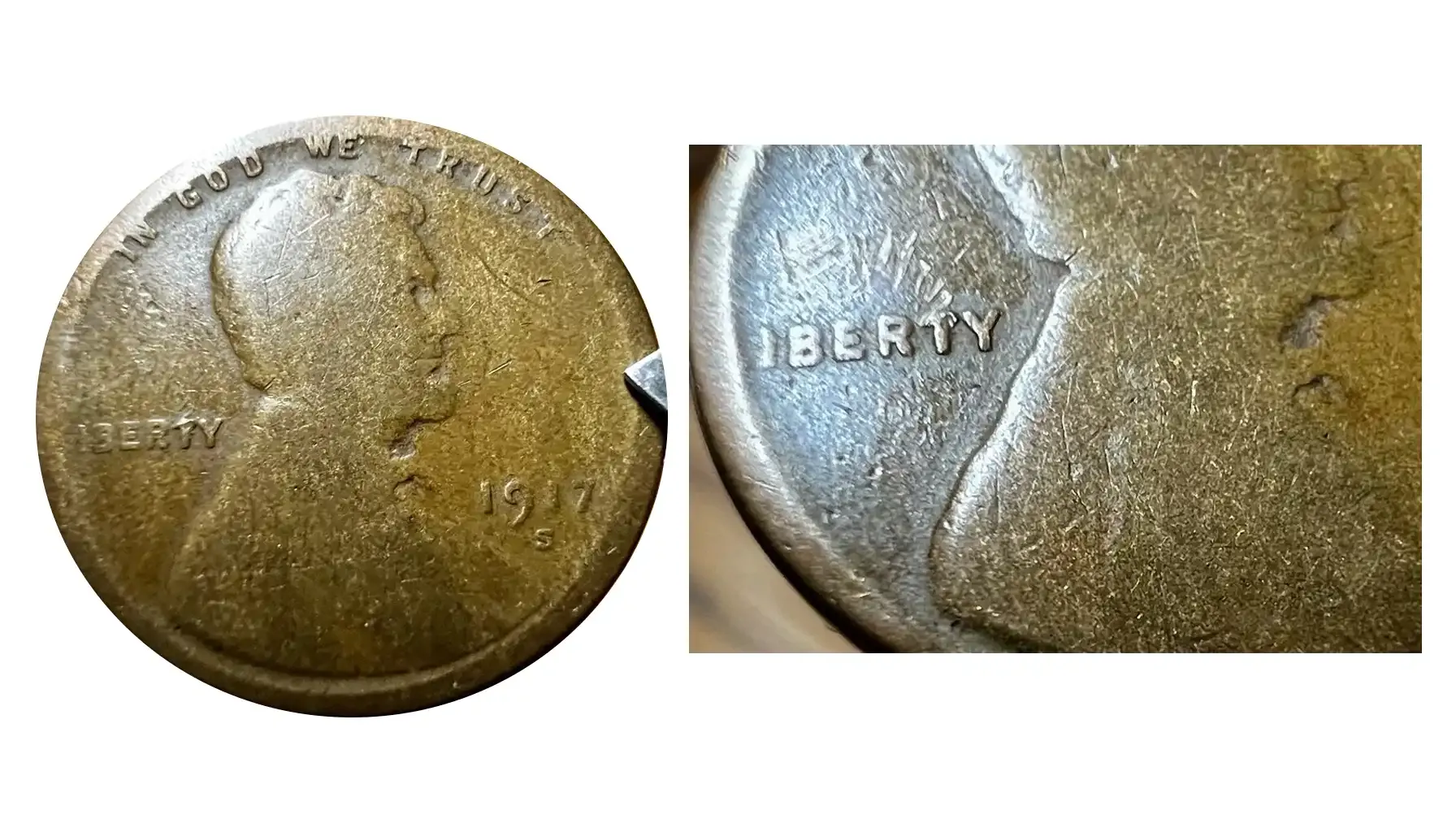
Estimated Value: Around $2,500
Sometimes, errors come down to the lack of design elements or even words. Here is the error that results in the "L" in LIBERTY not appearing on the surface, thanks to A grease-filled die. It is a relatively subtle but desirable anomaly due to its visual distinctiveness and rarity.
RPM (Repunched Mint Mark – D/D)

Estimated Value: Approximately $325
A repunched mint mark occurs if the "D" mint mark was struck more than once in slightly different positions. This anomaly is notoriously common among early Denver-minted coins, but still valuable in Mint State.
Die Break + Bubble Error
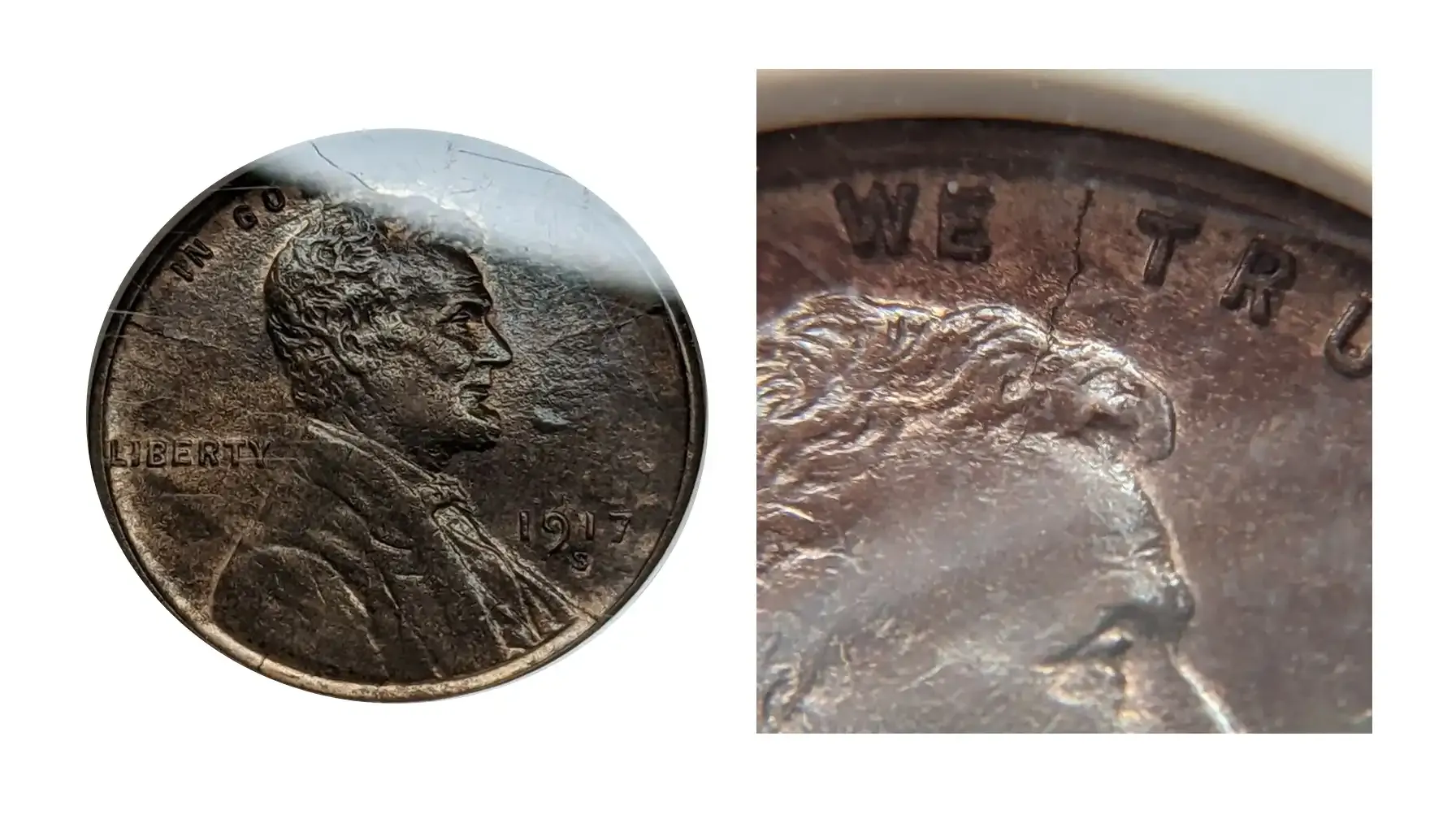
Estimated Value: Around $250
Last but not least, there is a peculiar and often overlooked error, i.e., a die break, which occurs when a portion of the die cracks, leaving a raised area on the coin. When paired with planchet bubbles (caused by gas expansion under the surface), it creates a unique and collectible anomaly.
The 1917 issue may not be the most popular coin to look for, but it is definitely worth taking into any collection. Coins grow in value over time, and this is the case when the true potential is yet to be revealed.

